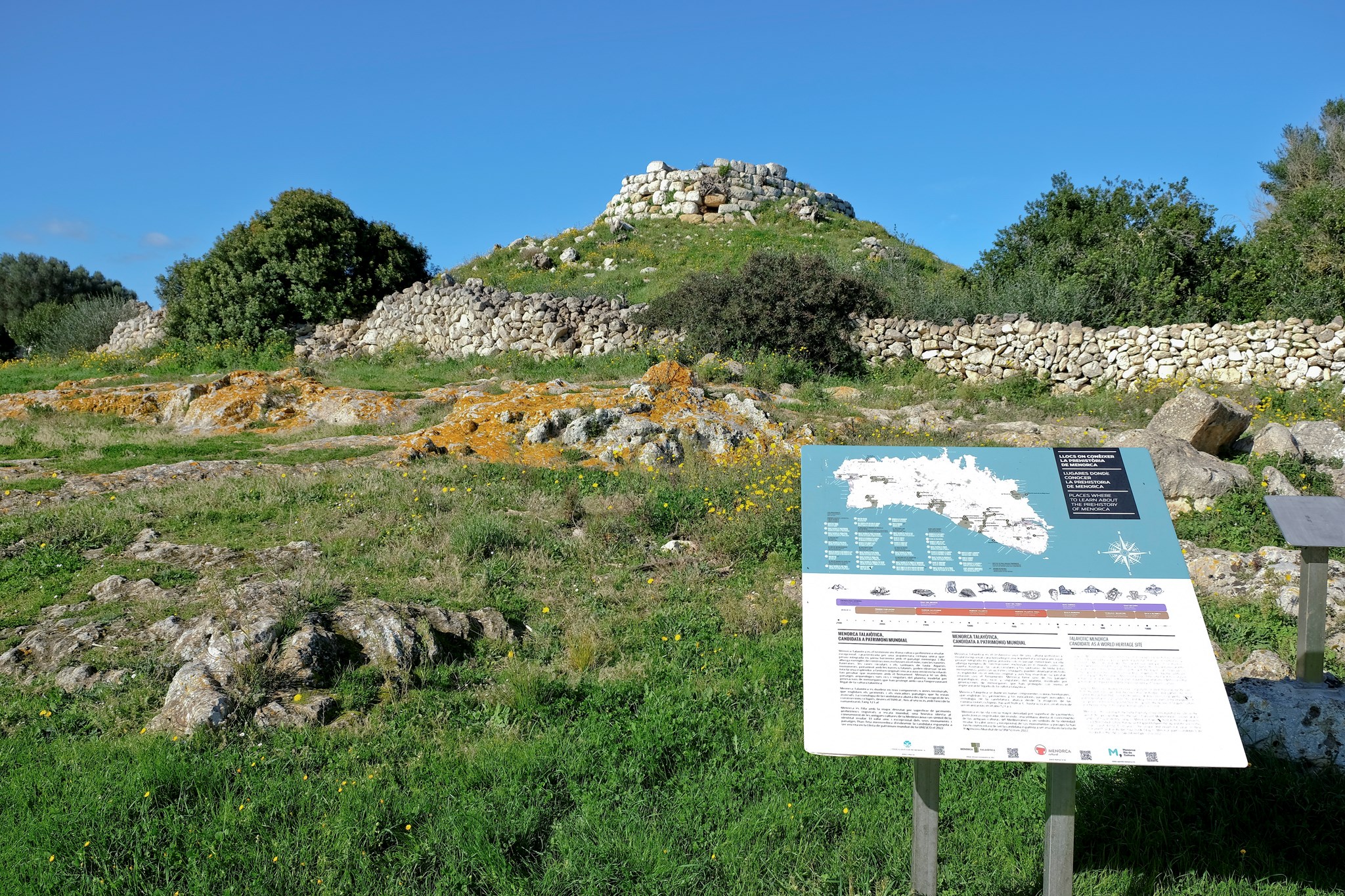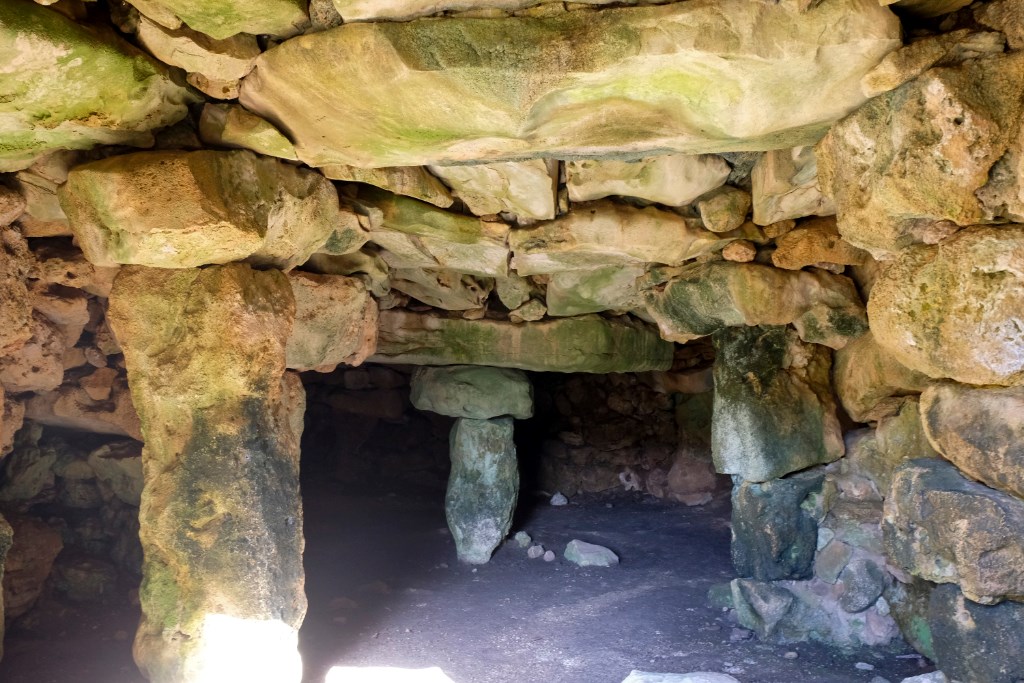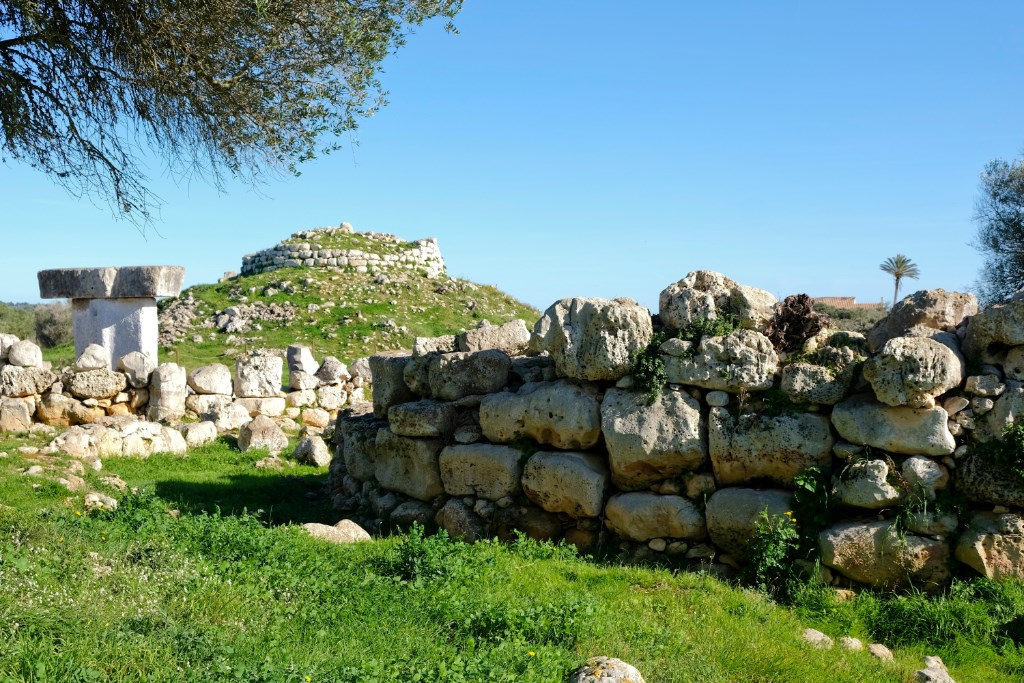- Publication date
Torralba d’en Salort: A Talayotic Treasure in the Heart of Menorca
- Authors
- Name

Torralba d’en Salort is one of the most fascinating and best-preserved prehistoric sites in Menorca. This Talayotic settlement, surrounded by mystery and ancient memory, impresses not only with its monumentality but also with the emotional connection one feels when walking among its millennia-old stones. Located between Alaior and Cala en Porter, this site invites you to explore Talayotic Menorca in all its essence. If you want to discover Menorca’s talayots, understand its prehistory, and marvel at its impressive taula enclosures, read on — what you’ll find will move you.
What is Torralba d’en Salort and why is it so special?
Located near the Cala Morell urbanization, north of Ciutadella, the Cala Morell Necropolis is a funerary complex made up of 14 caves carved into the rock, used for centuries as collective burial spaces. It is estimated that this archaeological site was in use from the Bronze Age to the Roman period, highlighting its importance within Talayotic Menorca.
Visiting it means delving not only into Menorca’s past but also into the spirit of a people who knew how to use the island’s resources to build one of the most remarkable legacies in the western Mediterranean.
A jewel of Talayotic Menorca
Included in the UNESCO World Heritage designation
Since 2023, Menorca has been recognized as a World Heritage Site for its Talayotic cultural landscape. Torralba d’en Salort is part of this recognition thanks to its state of preservation, scientific value, and monumental beauty. Its taula, probably used for ritual or religious purposes, continues to spark the curiosity of archaeologists, historians, and visitors.
The site is open to the public and managed by the Illes Balears Foundation, which acquired it in 1990 to preserve and promote this legacy. Walking through Torralba d’en Salort is like living prehistory firsthand.
My personal experience at Torralba d’en Salort
A visit that changes your perspective on history
I remember my first time at Torralba d’en Salort as if it were yesterday. I didn’t expect to find such grandeur or such an imposing taula. I stood before it for several minutes, trying to imagine the rituals that might have taken place there over 2,500 years ago. I was struck by the serenity of the surroundings, the way the wind whispered between the stone blocks, as if trying to tell secrets from the past.
Beyond its historical value, what struck me most was the emotion of feeling part of something much greater. At that moment, I understood why so many visitors return. Torralba is not just an archaeological site; it is an emotional and cultural experience.
A tour of Torralba d’en Salort: what to see and feel

From structure to structure: an immersion into Menorca’s origins
Torralba d’en Salort is more than an archaeological postcard; it is a journey through the roots of a prehistoric civilization. As you walk along its dirt paths, surrounded by Mediterranean vegetation, an ancient world unfolds before you.
The path leads first to the taula enclosure, a T-shaped structure formed by two massive stone blocks that rise with an almost magical symmetry. Although the exact meaning of the taula remains a mystery, it is believed to be linked to religious or healing rituals. Observing it up close, it is clear that this is a construction full of symbolism.
The hypostyle hall: stunning prehistoric architecture

Just a few steps from the taula, the hypostyle hall — a covered structure supported by stone columns — recalls the temples of much more advanced civilizations. This hall, probably used as a ritual storehouse or even for religious practices, is one of the most impressive in Talayotic culture.
Entering it felt like stepping into a sacred place. The temperature dropped, footsteps echoed deeply, and everything invited silence. Experiences like this make Torralba d’en Salort stand out among Menorca’s other Talayotic sites.
The talayots: watchtowers and symbols of power
Talayots were towers built with large stone blocks, possibly for surveillance, defense, or as symbols of power. Torralba has two clearly visible talayots, one circular and one oval. Climbing near them offers a strategic view over the ancient territory.
Hypogea and houses: everyday life in Talayotic Menorca
The remains of circular houses and rock-cut hypogea used for burials provide a unique insight into Talayotic daily life: spatial organization, funerary rituals, and architectural durability.
Even after centuries of abandonment, the site’s layout remains coherent and legible.
Historical context: from 1000 BC to Romanization

The site was occupied from around 1000 BC and lasted until the arrival of the Romans around 123 BC. The discovery of ceramics, tools, and bones completes the puzzle of a stable yet evolving culture.
Why choose this site?
Emotion, connection, and discovery
Among Menorca’s many Talayotic sites, Torralba d’en Salort stands out for its unique atmosphere. It is not only an archaeological visit but also a truly introspective journey.
Conclusion: a place that leaves a mark
Torralba d’en Salort is not just a site to visit; it is a transformative experience. Every stone and artifact tells a story. The imposing taula, the ingenuity of the hypostyle hall, and the site’s serenity offer total immersion.
Whether you travel alone, as a couple, or with family, this site will delight those seeking culture, emotion, and authentic landscapes.
Awaita: your virtual companion
With Awaita, you can:
- Ask real-time questions.
- View an interactive geolocated map.
- Access multilingual information.
- Personalize your visit according to your interests.
Awaita is available year-round, with no time constraints or need for a guide. Menorca’s history is now in your pocket.
Frequently Asked Questions
Where is Torralba d’en Salort?
Torralba d’en Salort is located in the municipality of Alaior, in the center of Menorca, near Cala en Porter. The site is signposted and easily accessible by car.
What can I see at Torralba d’en Salort?
You can see an impressive taula enclosure, two talayots, a unique hypostyle hall, remains of houses, rock-cut hypogea, and a cyclopean wall. It is one of the most complete Talayotic sites on the island.
How much is the entrance fee?
The general admission fee is €4, with discounts for students, seniors, and children. Funds are used for site maintenance and archaeological research.
How long does the visit take?
The visit usually lasts between 45 minutes and 1 hour, depending on your pace and interest. With Awaita’s assistance, you can extend your visit as long as you wish.
How do I get to Torralba d’en Salort from Maó or Ciutadella?
From Maó, it’s about a 20-minute drive. From Ciutadella, it’s about 40 minutes. Take the main Me-1 road and exit towards Alaior.
Is it part of the Menorca Talayotic UNESCO World Heritage?
Yes, Torralba d’en Salort is among the sites included in the Menorca Talayotic project, recognized by UNESCO as a World Heritage Site in 2023 for its exceptional cultural and archaeological value.
How can Awaita help me visit Torralba d’en Salort?
Awaita is a web app that acts as your virtual assistant to discover Torralba d’en Salort in a free and personalized way. Through its intelligent chat, you can ask real-time questions and get tailored answers without depending on guides or schedules. Its interactive map with geolocation shows all points of interest on and around the site, helping you plan your visit. Awaita also translates the information into several languages, ideal for international travelers. Discover the site’s history at your own pace, any time of the year.